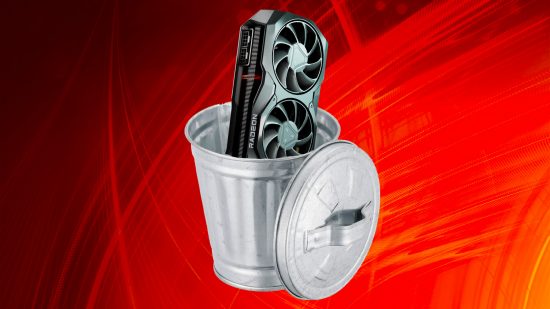Wake up, AMD. Do I need to give you a good shake, and launch a glass of water into your face, before you fix your GPU branding? Radeon is dead – virtually no one is buying the latest RDNA 3 GPUs, and you need to fix it.
Nvidia is getting away with charging extortionate prices for its latest Ada Lovelace GPUs because it knows people won’t jump ship to the competition, and I think I speak on behalf of a lot of PC gamers when I say the gaming GPU market needs fixing badly.
Valve recently released its latest Steam Survey, which paints a damning picture of AMD’s GPU division. I’ve listed the top 10 GPUs below, and while the list spans an eclectic range of GPUs from the last seven years, there’s one common factor – they’re all made by Nvidia.
This is the GPU top 10 on the Steam Survey:
- Nvidia GeForce GTX 1650 – 5.67 percent
- Nvidia GeForce RTX 3060 – 4.74 percent
- Nvidia GeForce GTX 1060 – 4.58 percent
- Nvidia GeForce RTX 3060 Laptop – 4.28 percent
- Nvidia GeForce RTX 2060 – 4.15 percent
- Nvidia GeForce GTX 1050 Ti – 3.61 percent
- Nvidia GeForce RTX 3060 Ti – 3.42 percent
- Nvidia GeForce GTX 1660 – 3.3 percent
- Nvidia GeForce RTX 3070 2.99 percent
- Nvidia GeForce RTX 3050 – 2.66 percent
You have to go all the way to number 14 before you see AMD’s name, and that’s just the generic ‘AMD Radeon Graphics’ moniker it uses on its integrated GPUs. The first proper discrete AMD GPU name on the list is the ancient Radeon RX 580 at number 23, with a share of just 1.04 percent.
It’s not until you drop down to number 41 that you spot the first vaguely modern AMD GPU (with ray tracing support) on the list – the Radeon RX 6700 XT, with just a 0.62 percent share of Steam users. To put that in perspective, even the recently released (and overpriced) GeForce RTX 4070 Ti is higher on the list, with a 0.62 percent share.
According to the survey, AMD owns just 15.04 percent of the Steam GPU user base, compared to 76.05 percent for Nvidia. There also isn’t a single AMD Radeon GPU based on the RDNA 3 architecture even on the list, while the GeForce RTX 4090, 4080, 4070 Ti, and even the relatively recently launched GeForce RTX 4070, all make the cut. The RDNA 3 architecture has been out for over half a year now, and so few people are using it that it doesn’t even factor on the Steam Survey.
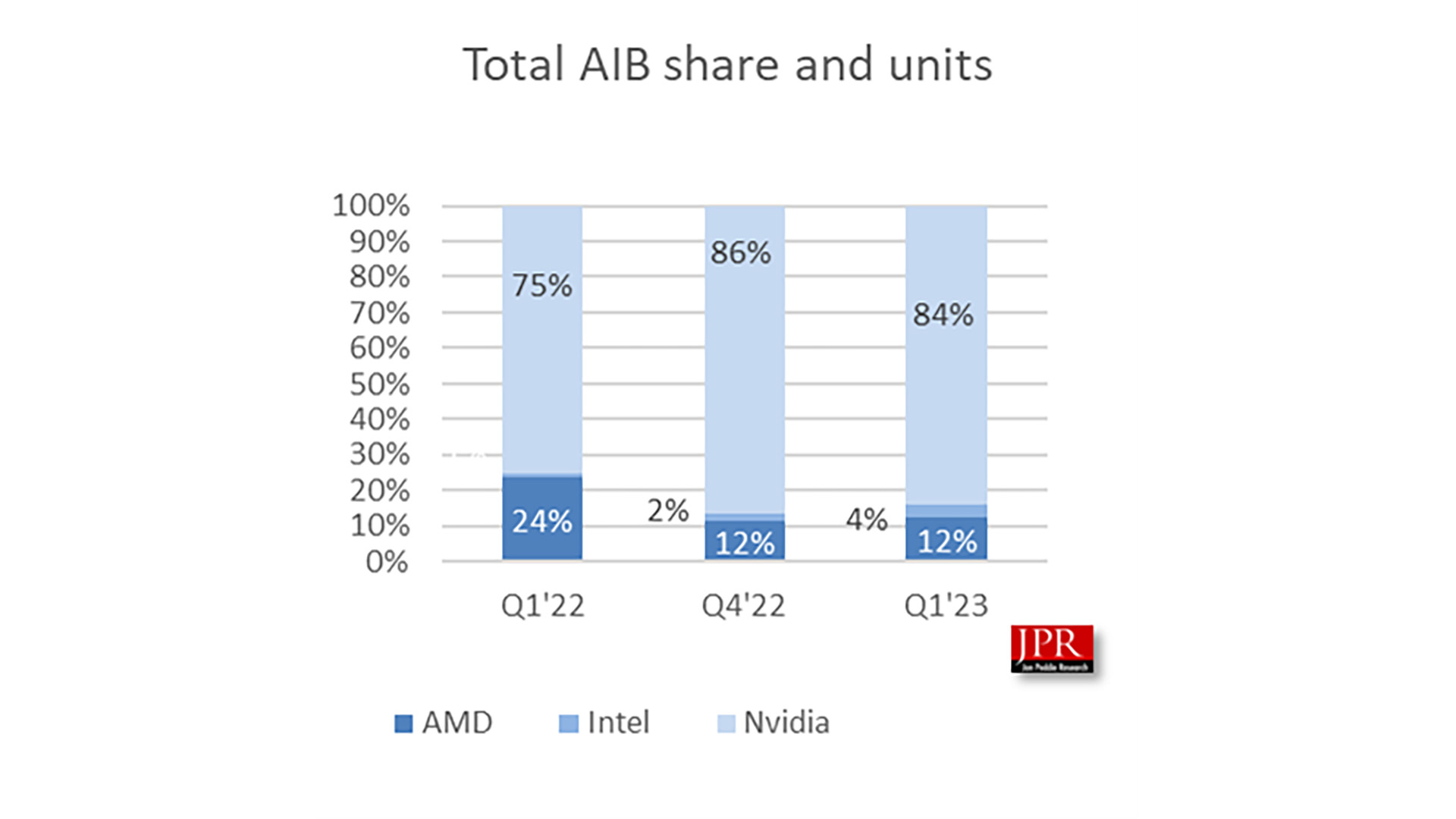
The latest data from Jon Peddie Research paints an even bleaker picture, showing AMD’s share of the add-in-board market sitting at just 12 percent, with Nvidia apparently losing market share to Intel, rather than AMD, quarter-on-quarter.
All GPU sales are down, of course, following inflation, people reining in spending, and a big drop in demand following the pandemic and GPU crypto-mining boom. In terms of proportion, though, AMD is losing big time. AMD is supposed to be the main competitor to Nvidia, and it doesn’t even command a sixth of the market, let alone half.
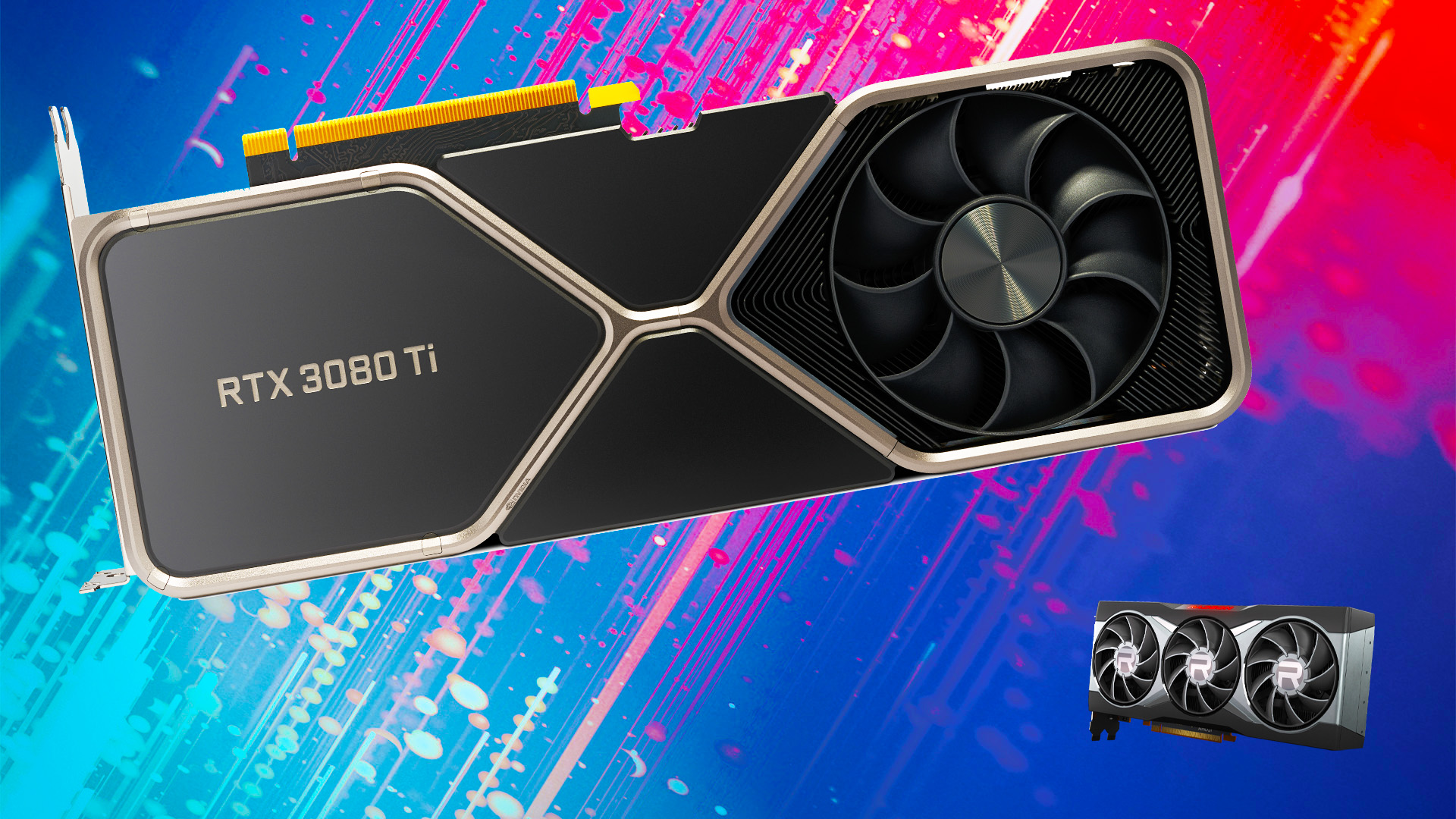
Retailers tell a similar story. In 2021, we looked at the sales trends of Radeon 6000-series GPUs compared to GeForce 3000-series GPUs at UK tech etailer Scan, and AMD Radeon sales were surprisingly poor across the board. Even when an Nvidia GPU was out of stock, customers would often prefer to trade up to a more expensive Nvidia GPU that was in stock, rather than buy the equivalent AMD GPU.
Let’s contrast this with AMD’s excellent Ryzen brand, which has nearly a third of Steam users at 32.03 percent, despite the brand dominance of Intel. AMD has had to fight hard for this, developing the new Zen architecture while it was financially hard up, and then going for a big rebrand to fix the damaged FX name.
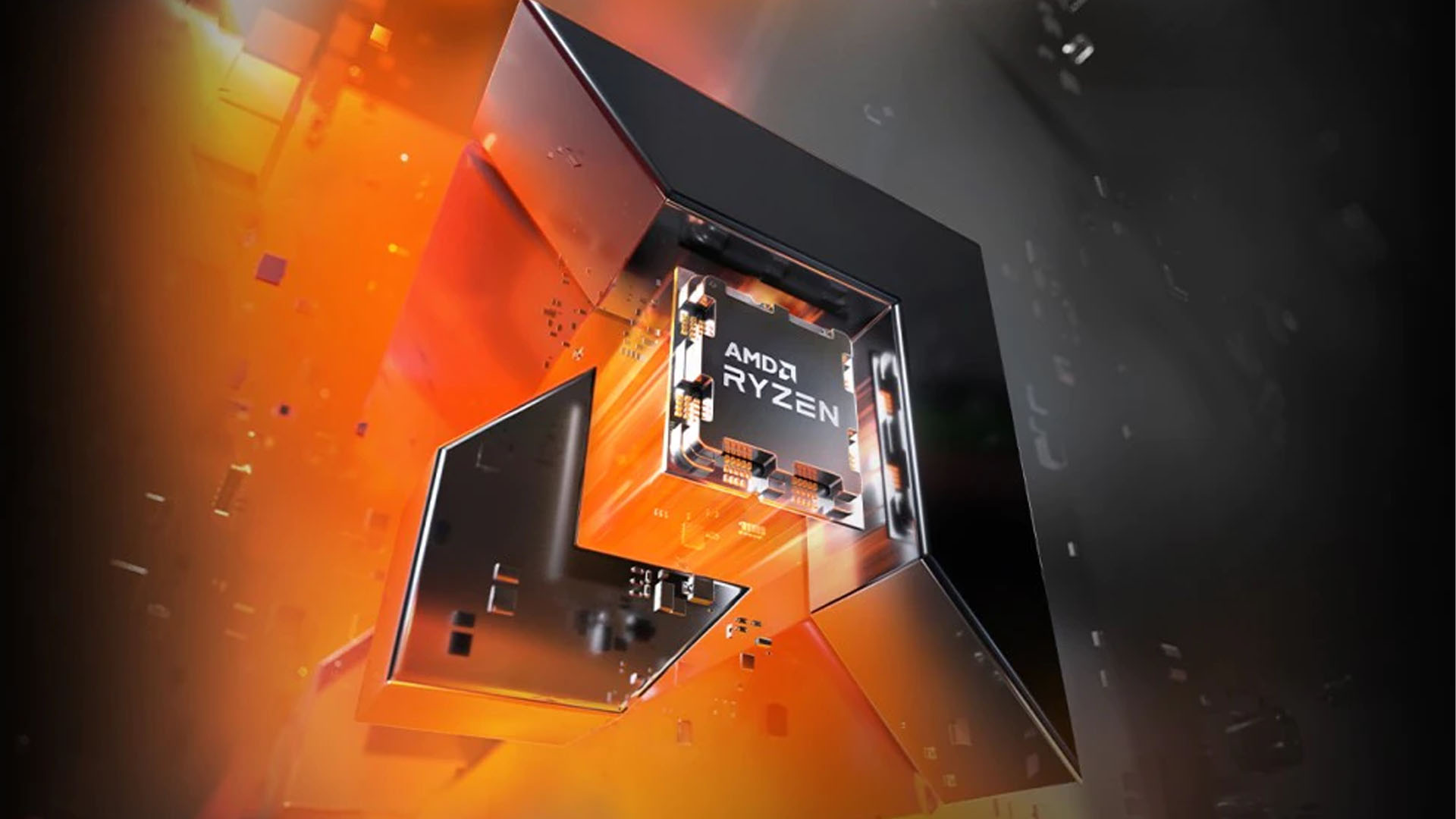
When you have a brand that people associate with mediocrity, it needs to go, or at least be demoted to a budget brand instead. Intel did the latter with Pentium when it launched the Core brand to mitigate the damage done by the Pentium 4. AMD did it with Athlon, which was used as a budget brand in the Ryzen era. It’s now time for Radeon to go the same way, because it is being associated with mediocrity.
The problem isn’t the name Radeon itself. There’s enough grey in my beard for me to remember when ATi demonstrated the very first Radeon GPU to me in 2000. It was a great GPU – it was faster than the Nvidia GeForce 256, and it went a long way toward addressing the damaged ATi Rage brand.
ATi and Nvidia continued going back and forth, out-competing each other with each generation. The ATi Radeon 8500 out-performed the Nvidia GeForce 3, and the Radeon 9700 even brought us DirectX 9 shaders before Nvidia could get there with the ill-fated GeForce FX lineup. The Radeon 9800 lineup then proceeded to kick GeForce FX into the dust.
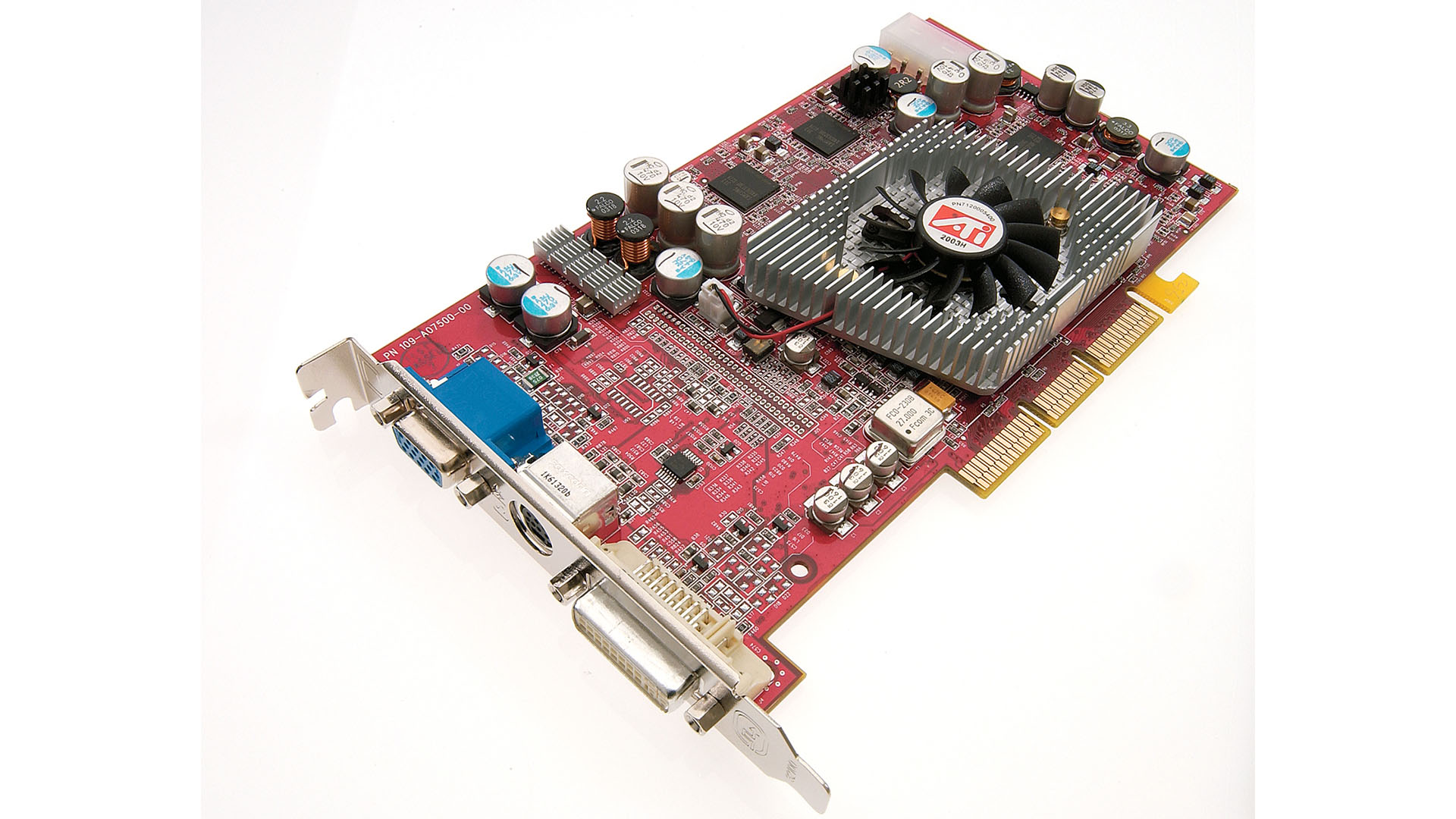
Radeon hasn’t been able to beat GeForce for a long time when it comes to performance now, though. The last time a Radeon GPU truly outperformed the previous Nvidia GPU was when the first Graphics Core Next GPU, the Radeon HD 7970, went up against the GeForce GTX 580, over a decade ago.
Since then, Nvidia has led the charge, with AMD only able to compete in the mid-range with its first RDNA Navi GPUs, which didn’t even support ray tracing, and all its GPUs since struggling to keep up with Nvidia’s ray tracing speed. Nvidia has also been ahead of AMD on technologies such as DLSS, with there still being no sign of AMD FSR frame generation tech.
AMD has been here before, though. It managed to pour enough resources and clever thinking into its CPU architecture to beat Intel at its own game. The first three generations of Ryzen CPUs were far from perfect too, with Intel still being ahead when it came to single-threaded and gaming performance.
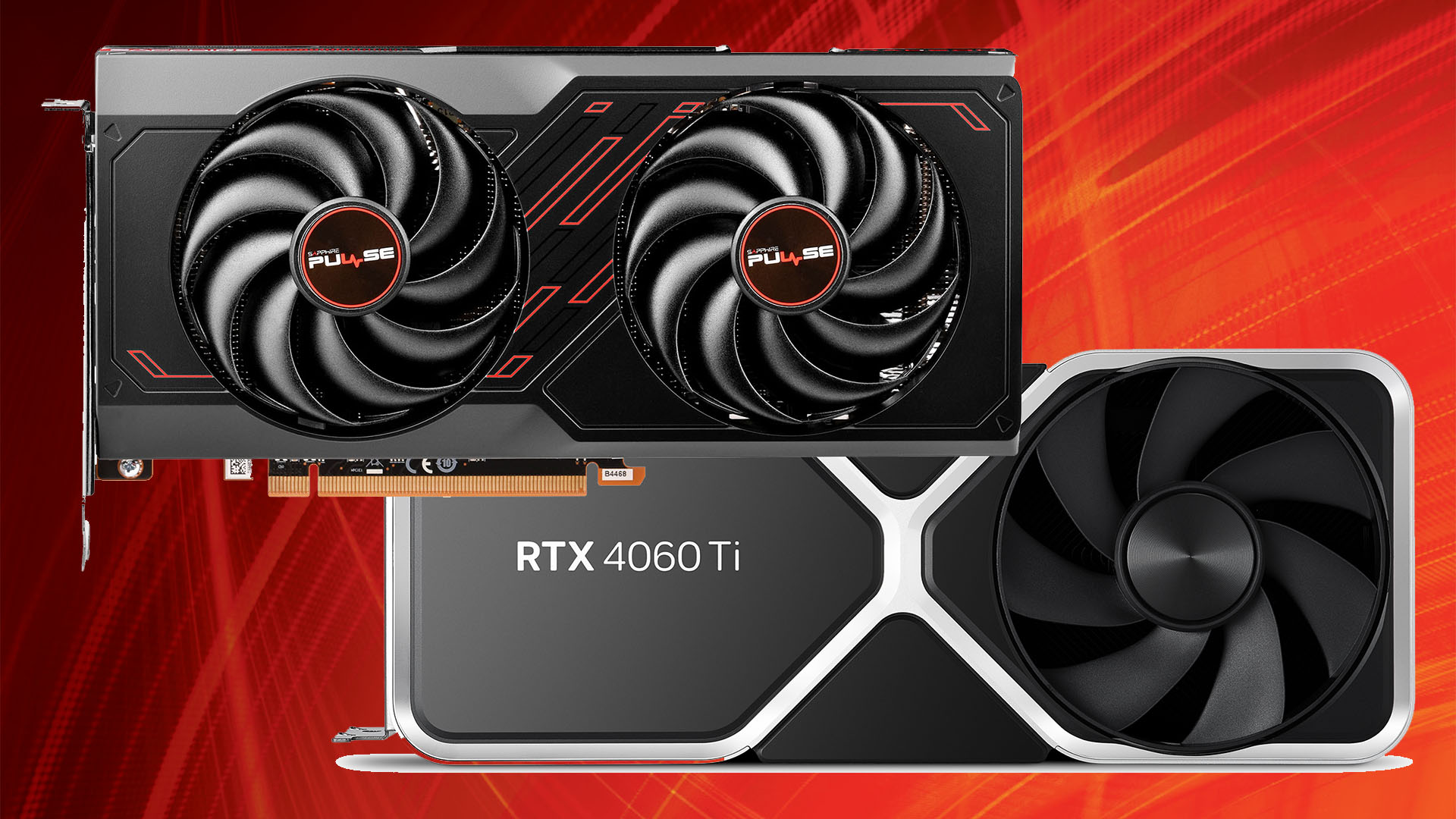
It didn’t matter, though, because AMD had outdone Intel on core counts and, perhaps more importantly, AMD had rebranded. Similarly, AMD’s latest GPUs aren’t bad. In fact, the Radeon RX 7600 is our favorite budget GPU, and it’s listed on our best graphics card guide – it holds up well in an Nvidia vs AMD battle.
AMD knows its top-end GPUs can’t compete with Nvidia on ray tracing, but this is reflected in the pricing. You can pick up a Radeon RX 7900 XT for just $769 now, and its pace in non-ray-traced games is comparable to the massively overpriced GeForce RTX 4080.
When it comes to the next GPU architecture launch, AMD needs to apply the same principles of its Ryzen rebrand to the Radeon brand. It doesn’t need to outdo Nvidia on every metric, but if it does it on a couple of key ones, gets the price right, and has a killer new brand name, then we could finally get some competition back in the GPU industry.
Have you bought an AMD Radeon GPU in preference to an Nvidia GeForce GPU? If not, what’s stopping you? Let us know your thoughts and questions on this post by joining the conversation on the Custom PC Facebook page, via Twitter, or join our Custom PC and Gaming Setup Facebook group and tap into the knowledge of our 350,000+ members.
